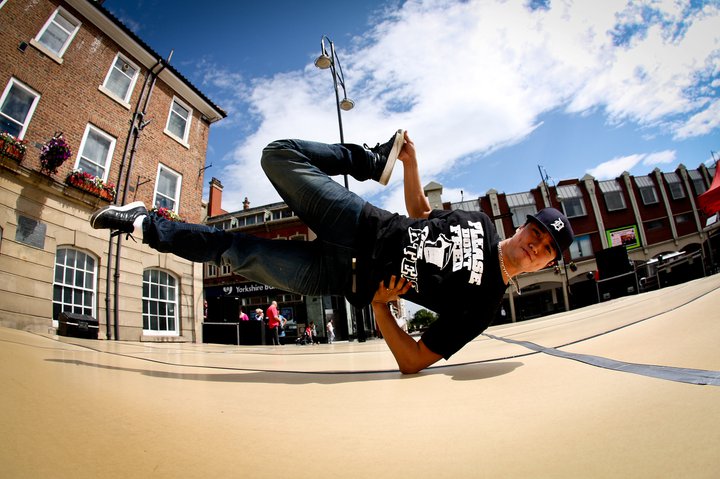The physics of Breakdancing
Breakdancing is a rhythmic gymnastic style of hip hop dancing. Breakdancing is a combination of several aspects of physics, such as friction, center of mass, momentum, and rotational motions.
Friction is important in breakdancing because it provides a certain amount of control in different "power moves". A power move, is a gymnastic like movement. To much friction and your movement will stop to soon, not enough friction and you lose control of your body.
Center of mass, is seen in moves called "freezes". These moves are heavily dependent on staying in control of your center of mass.
Momentum can be the reason that a movement can be completed. Most moves require a whipping phase, where momentum is built and then transferred to finishing phase.
The key to most of breakdancings difficult moves is rotational motion, constant circular movements, allowing the dancer to seamlessly move from trick to the next.
Friction is important in breakdancing because it provides a certain amount of control in different "power moves". A power move, is a gymnastic like movement. To much friction and your movement will stop to soon, not enough friction and you lose control of your body.
Center of mass, is seen in moves called "freezes". These moves are heavily dependent on staying in control of your center of mass.
Momentum can be the reason that a movement can be completed. Most moves require a whipping phase, where momentum is built and then transferred to finishing phase.
The key to most of breakdancings difficult moves is rotational motion, constant circular movements, allowing the dancer to seamlessly move from trick to the next.
